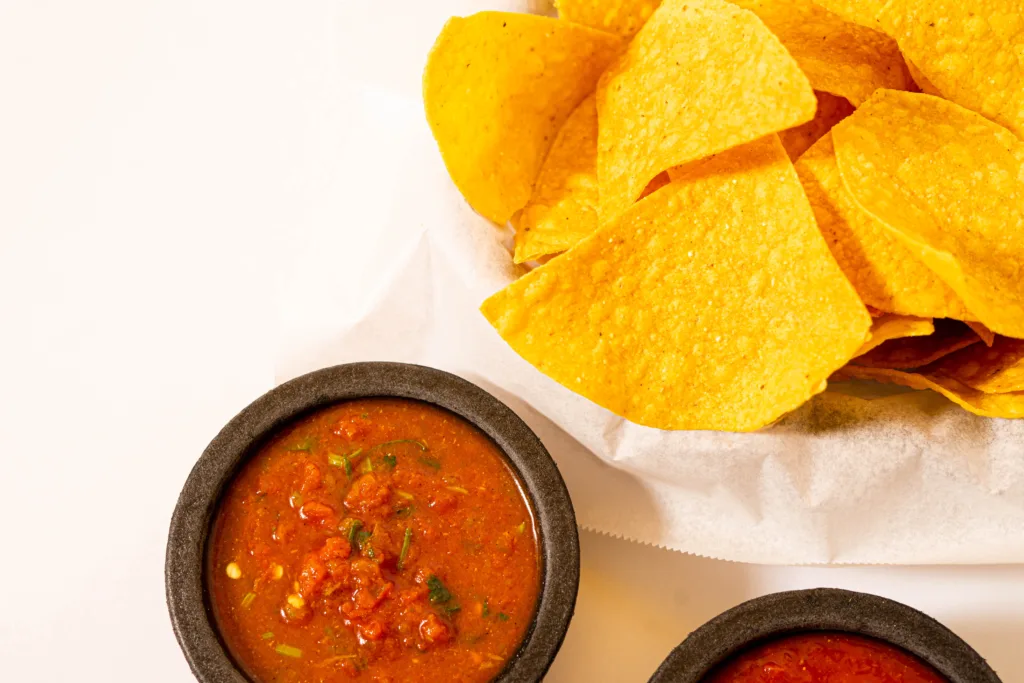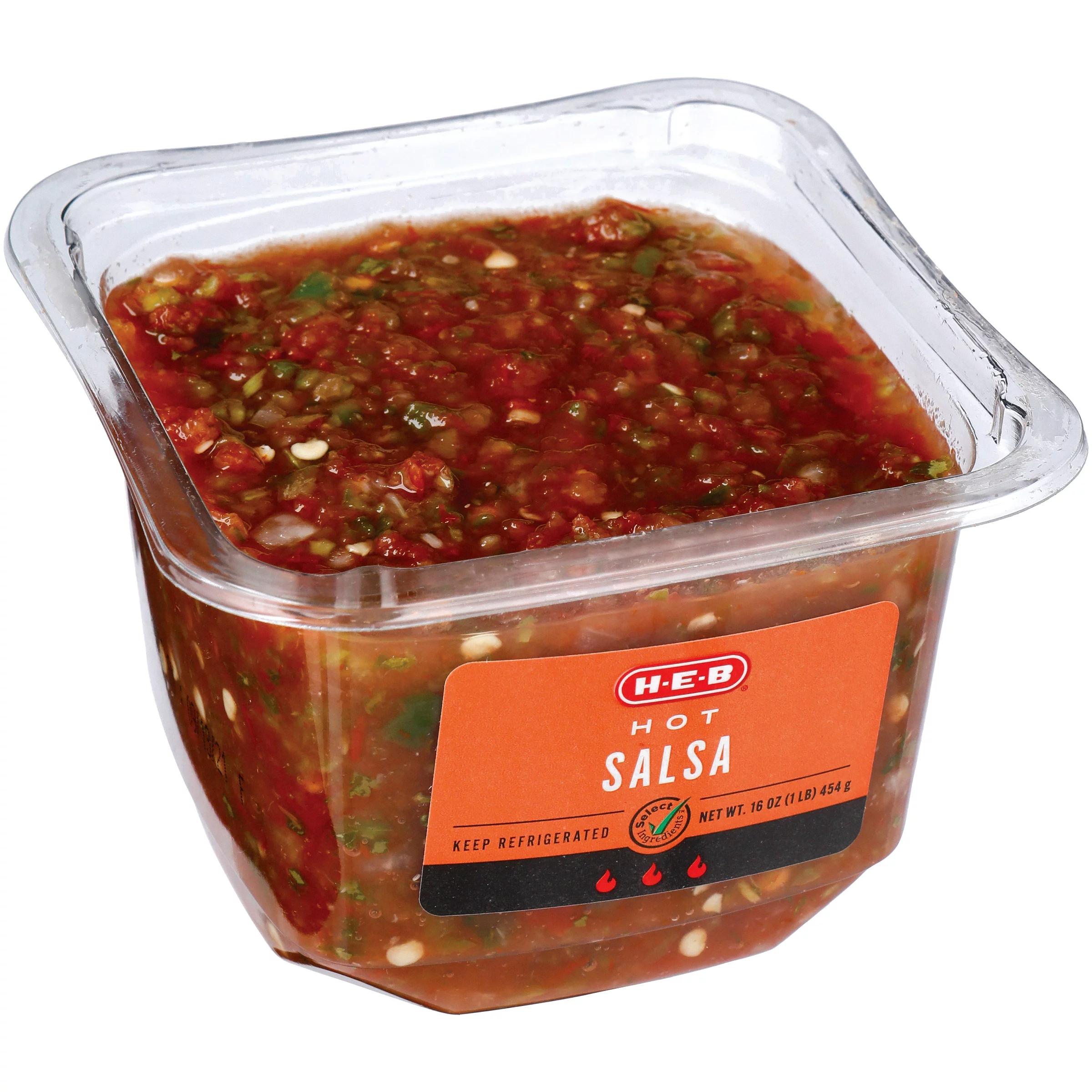Salsa is a popular condiment that adds flavor and spice to a variety of dishes. Whether you enjoy it as a dip, a topping for tacos, or mixed into a quinoa bowl, salsa is a versatile ingredient that can add a pop of flavor to any meal. However, one question that often arises is whether or not salsa needs to be refrigerated.
The short answer is yes, most salsa should be refrigerated. The only exception is shelf-stable jarred salsa that has not been opened. This type of salsa is made to sit on shelves and in pantries for extended periods of time and can stay fresh for over a year without refrigeration. However, once the jar is opened, it should be refrigerated to prolong its shelf life.
For all other types of salsa, including refrigerated and homemade salsa, and open jars of canned salsa, refrigeration is necessary. This is because salsa contains ingredients that can spoil if left at room temperature for too long. Tomatoes, onions, and chiles are all common ingredients in salsa and while they are acidic enough to keep the salsa safe for a while, refrigerating it will extend its shelf life.
Canned or bottled salsa usually contains enough vinegar, lemon, or other acid ingredients to make it safe to store at room temperature. However, it’s still a good idea to refrigerate opened jars to ensure ther freshness.
If you’re making homemade salsa, it’s important to refrigerate it as soon as possible after it’s been prepared. This will prevent the growth of harmful bacteria and keep your salsa fresh for longer. If you’re unsure whether your homemade salsa is safe to eat, it’s always best to err on the side of caution and throw it away.
While shelf-stable jarred salsa can be stored at room temperature, all other types of salsa should be refrigerated. This will ensure that your salsa stays fresh and safe to eat for as long as possible. Whether you’re enjoying salsa as a dip or a topping, it’s important to take the necessary precautions to keep it fresh and tasty.
Do I Need to Refrigerate Salsa?
It’s important to refrigerate salsa for food safety reasons. Salsa contains ingredients like tomatoes, onions, and peppers that are all high in moisture content. When these ingredients are combined and left at room temperature, it creates an ideal environment for bacteria to grow. This could lead to foodborne illnesses like Salmonella or E. coli. Therefore, it’s important to store salsa in the refrigerator to slow down the growth of bacteria and keep it fresh for longer. The only exception is shelf-stable jarred salsa befre you open the jar, but all other options should be refrigerated after opening. So, if you want to enjoy your salsa safely and keep it fresh for as long as possible, make sure to store it in the refrigerator.

The Shelf Life of Jarred Salsa Without Refrigeration
Jarred salsa can still be good even if it is not refrigerated. Airtight unopened commercially-jarred salsas are made to last for an extended period of time without refrigeration. They can stay fresh for over a year when stored properly in a cool, dry place away from direct sunlight. However, once you open the jar, you should refrigerate it to extend its shelf life and maintain its flavor and quality. It is also recommended to consume the opened jar of salsa withn a week or two after opening to avoid any potential spoilage or bacterial growth. So, if you have an unopened jar of salsa that has been stored correctly, it should still be good to use even without refrigeration.
Does Tostitos Salsa Go Bad Without Refrigeration?
Yes, Tostitos salsa can go bad if not refrigerated. Tostitos salsa contains fresh ingredients such as tomatoes, onions, and peppers that can spoil over time when exposed to heat and air. The salsa’s acidity and preservatives can delay the spoilage process, but leaving it out at room temperature for too long can cause bacteria to grow, leading to food poisoning. Therefore, it is recommended to store Tostitos salsa in the refrigerator after opening to ensure its freshness and safety. Additionally, it’s best to consume the salsa within a week of opening to avoid any potential health risks.
Is Eating Salsa Left Out Overnight Safe?
It is not safe to eat salsa that has been left out overnight. Bacteria can grow rapidly in food that is left at room temperature for extended periods of time, and this can lead to foodborne illness. Salsa contains ingredients such as tomatoes, onions, and chiles that are low in acid, which means that they are more susceptible to bacterial growth. Even if the salsa looks and smells okay, it is still best to err on the side of caution and discard it if it has been left out for more than two hours. To ensure the safety of your salsa and oher perishable foods, it is recommended to store them in the refrigerator at or below 40°F.
Shelf Life of Unrefrigerated Salsa
Salsa is a tasty condiment that is typically made from chopped tomatoes, onions, peppers, and other seasonings. Once opened, salsa should be refrigerated and consumed within 5-7 days to ensure maximum freshness and safety. However, if salsa is left unrefrigerated, it must be consumed within 1 month of the date of opening to avoid the growth of harmful bacteria that can cause foodborne illness. Therefore, it is important to properly store salsa and keep it refrigerated to ensure its safety and enjoy it at its best quality.

Source: heb.com
How Long Can Unopened Salsa Remain Unrefrigerated?
If you have an unopened bottle of salsa and are wondering how long it can stay unrefrigerated, the answer is generally around 12 to 18 months. This is assuming that the salsa was sold at room temperature and has not been opened or tampered with. It is important to note that the exact shelf life of unopened salsa will depend on several factors, such as the ingredients used, preservatives, and storage conditions. However, it is generally recommended to store any unopened food items in a cool and dry place away from direct sunlight and sources of heat. Keep in mind that once opened, salsa sould be refrigerated and consumed within a few days for optimal freshness and safety.
Signs That Salsa Has Gone Bad
To determine whether salsa has gone bad, it is important to use your senses. Firstly, observe the appearance of the salsa. If you notice any mold growth or shriveled up tomatoes, it is a clear indication that the salsa has gone bad and should be discarded. Secondly, smell the salsa. If you detect a sour or foul odor, it is anoher sign that the salsa has gone bad. Lastly, taste a small amount of the salsa. If it tastes off or has a strange texture, it is best to err on the side of caution and dispose of the salsa. It is important to note that consuming spoiled salsa can lead to food poisoning, so always exercise caution when it comes to food safety.
How Long Does Jarred Salsa Last After Opening?
Once a jar of salsa has been opened, it can last for up to 1 month in the refrigerator as long as it is continuously stored at a temperature of 40°F (4°C) or below. After this time, the salsa may start to spoil, lose its flavor, or develop mold. To extend the shelf life of opened salsa, it can be frozen. To freeze salsa, transfer it into airtight containers or heavy-duty freezer bags, making sure to leave some headspace for expansion. Frozen salsa can last for up to 6 months in the freezer, but it may start to lose its texture and flavor after this time. It’s important to note that jarred salsa that has been left unrefrigerated for an extended period of time should be discarded, as it can pose a risk of foodborne illness. Always check the expiration date on the jar before opening, and discard any salsa that looks or smells off.
Conclusion
Salsa is a delicious and versatile condiment that can be used in a variety of dishes. However, it is important to note that proper storage is crucial to ensure its freshness and safety. While commercially-jarred, unopened salsas can sit on shelves for a year, opened jars of salsa, homemade salsa, and refrigerated salsas must be kept in the fridge. Additionally, it is recommended to refrigerate all types of salsa after opening to prolong its shelf life. If the salsa has tomatoes, onion, and chiles, it should be acidic enough to keep for a while, and canned or bottled salsa usually has enough acid ingredients to make it safe at room temperature. By following these guidelines, you can enjoy delicious and fresh salsa in all your favorite dishes.
